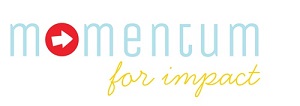 Special to the Philanthropy Journal
Special to the Philanthropy Journal
By Tera Qualls
In part 1 of this article, I described the foundation of an Equitable Talent Development System. In this part we will explore the intricacies of making our surface values of equity, inclusion, diversity, cultural competency, and social justice real internal systems that drive the make-up and development of our team.
The components of an Equitable Talent Development System we will explore include, salary and benefits, recruitment, professional development, and performance assessment. Each component of the system needs intentional policies and practices to ensure the practice is equitable, and no system is truly equitable until you have tackled each component.
Equity in salary and benefits includes paying a living wage, providing benefits to all staff (part and full time), and ensuring there are no inconsistencies of pay across demographics for individuals in similar positions. Two of the most famous arguments in the nonprofit sector is “we don’t have the budget to pay more” and “we have to keep overhead low”. The problem with these arguments is that they don’t take into account long term sustainability of the organization. Yes, you do have to have the money to pay staff, but you have to take into account the return on investment of paying more at the outset and reducing turnover and burnout.
The challenge in the outset is raising enough funds to pay your staff a larger salary. Raise the money first, then make the investment in your team. If you are having an issue with donors or funders, develop a technical argument for why you should pay your team more. Talk about how turnover is killing your budget and how burnout is leaving your programs lacking a mentally strong team.
When considering pay and benefits also consider inconsistencies across demographics. Be sure that men and women have equal pay, and that there are no inconsistencies across racial lines. An organization that leads with equity should not allow these inequities among your team.
Finally, when considering benefits for your team think a bit out of the box. If you are unable to provide full health and retirement benefits at first, ensure your team gets perks such as greater amounts of vacation time, paid family leave, paid daycare in the workplace, and an offer of sabbatical after a number of years of service. Each of these items are easier to budget ahead of time without much flux. A salary is a salary in the budget, even if someone takes 12 weeks off paid for example. Yes, you would be paying staff for time they aren’t working, but the mental and physical health of those that have time off will be stronger and allow for better work when they are in the office. This subject could fill an entire other article, but it’s important to note that stress and burnout are detriments to effective work.
Recruitment
In its most recent findings, Nonprofit HR states two issues nonprofit organizations are facing when it comes to recruitment. Nonprofit HR found “Nonprofits continue to lag behind the private sector in both their understanding of employment branding and their adoption of employment branding strategies.” and “Equally concerning is the fact that despite facing a range of staffing challenges, a majority of nonprofits are not planning on making changes to the way they source or retain talent.”
These findings suggest that many organizations have a tough time articulating their staffing needs and have no plan for shifting talent practices despite poor performance of employees. I will expand on performance assessment in just a bit, but the note is important here because it suggests that many organizations are not even giving themselves the opportunity to recruit new talent.
Building a strong talent pool requires an intentional recruitment strategy. Organizations should have an understanding of who is on their team, who they need to meet their strategic goals, a message about the culture of the organization (or brand), and a plan for recruiting beyond their usual network. With all the right tools in place and a culture that exhibits inclusion and equity, recruitment and attraction of a diverse team will be much more successful.
If you are looking for tools to develop your strategies, think of exploring The Talent Development Platform, as well as other resources on nonprofithr.com for building Talent Acquisition Strategies and resources available here in the Philanthropy Journal.
Professional development
Professional development is one of the great equalizers. Any individual with the opportunity, ability, and support to learn can rise to the expectations set for them. Yes, it does take willingness, but without the opportunity for learning, individuals that are willing and able to learn cannot. In an equitable system, professional development should be offered to ALL individuals in the organization, no matter their role.
In order to offer professional development to your full staff you have to provide opportunities beyond money for training. As “The Talent Development Platform” recommends, organizations should offer learning opportunities on-the-job, through mentoring or coaching, and through training. Many of these types of training do not cost your organization anything outside of time.
The Talent Development Platform “borrows from the Center for Creative Leadership’s 70–20–10 model … As the 70–20–10 name implies, the learning model calls for 70 percent of the staff member’s time spent on professional development to consist of on-the-job learning, supported by 20 percent spent on coaching and mentoring, and 10 percent spent in classroom training (Bridgespan Group, 2013). … as the model states, money spent on training will not support the full array of learning that adults need to grow in a specific competency area. The Center for Creative Leadership has found that although most organizations acknowledge formal training alone can be limited in impact, most of their training budget is for classroom events and e-learning assets (Rabin, 2014).”
With an offer of professional development to all staff members in a way the Center for Creative Leadership suggests, organizations will gain benefits of stronger learning cultures and higher retention rates. Individuals who are offered growth opportunities will historically stay with organization’s longer and their satisfaction will increase.
Thirty-four percent of the organizations who responded to Nonprofit HR’s 2015 Employment Practices Survey, indicated Direct Service Employees are the most difficult to retain. Lack of professional development is one of the overriding reasons direct service staff leave. Combine professional development with stronger salaries and benefits and organizations will increase the retention of direct service staff, which could potentially save your organization tens of thousands of dollars each year in turnover costs.
Performance assessment
Successful performance assessment is the final component I will explore, of an Equitable Talent Development System. Successful performance assessment equates to a system that connects strategic plans to individual roles and offers performance assessment to all employees. Offering equitable performance assessment can be tough to achieve, but it is doable if (you guessed it) you are intentional. Here are the basic components you need to have in place:
- Oversight of the entire process by human resources and/or executive director to ensure consistency and timeliness.
- Training for managers offering the assessment, which should include a session on tackling unconscious bias.
- Accountability for managers to ensure they are all completing performance assessments on time and for all their team members.
- Personal time between staff members and managers for assessing performance assessment results, setting goals, and offering each other feedback.
- Staff members and managers working together to set both strategic goals and learning goals for each team member.
There are many different tools organizations can use to provide performance assessment and if the keys above are integrated any of them can be successful. The most important component is that all staff members receive a performance assessment with equal weight on the results. If there are inconsistencies in offering performance assessment, staff members may perceive favoritism or feel like they are of less value than someone who did receive an assessment.
If you are intentional about ensuring all the components of your talent development system are integrated your values of equity and inclusion you will see increased staff satisfaction, employee retention, and diversity. Each of these things occur when organizations offer systems that show every staff member they are valued. Cawley, Keeping, and Levy “that employees perceive the chance for self-expression as procedurally just, regardless of the final decision (Tyler et al., 1985). According to this explanation, attitudes are affected because the opportunity to voice one’s opinions is a desired end in itself (Korsgaard & Roberson, 1995); or as stipulated in Tyler and Lind’s (1992) relational model, people value voice in its own right because it validates their self-worth and their feelings of belongingness to a valued group.”
In the end aren’t those the values we want to uphold in our internal cultures? To ensure the disintegration of exclusive or inequitable managerial systems, organizations must by hyper intentional and vigilant in ensure all the components of their talent development systems are inclusive of all. Creating these strong systems will take time, but taking one step now in the right direction will ensure future sustainability. Pick a component and get started!
Tera Wozniak Qualls, M.P.A., is founder of Momentum, a nonprofit consulting firm focused on community engagement and talent development for nonprofits. Tera is also author of The Talent Development Platform: Putting people first in social change organizations.





